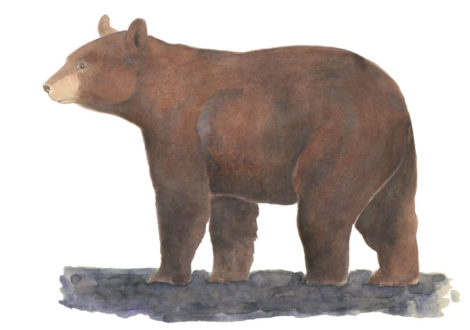
Animal Facts
Male black bears can weigh up to 315 pounds, while females can reach about 200. Like grizzlies, these animals can live up to 30 years in the wild. Their short, curved claws make them especially adept at climbing trees. Their name can be deceiving; only about half of the black bears in the area are actually black in color. It’s normal for their thick fur to appear brown, blond or even cinnamon in color.
A black bear’s diet is diverse. They feed on grasses, fruits, tree bark, fish, elk calves and on carcasses of animals that have died. Like grizzly bears they ramp up their calorie consumption in fall to fatten up before hibernation. Also like grizzlies, they den for the winter on north-facing slopes at elevations between 6,000 and 8,500 feet.
Black bear males have a range of 2 to 24 square miles. The range for females is smaller. Black bear mate in spring and give birth, typically to two cubs, while in the den in February.
Conservation Challenges
Many black bears become habituated to human interaction, or accustomed to eating food or garbage that is improperly handled by people. At best, these animals are tranquilized and relocated to another part of the area, but such interactions often lead to bears being killed. It’s important to follow all food storage regulations, and also critical to carry bear spray when recreating in bear country.

